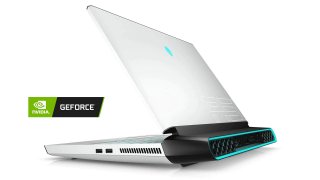Are OLED Laptop Screens Stupid Overkill?
Or about to go mainstream?
For the most part, OLED technology is amazing for TVs, but could the same be said for laptops?
If it’s at a reasonable price point, go for it. OLED laptop screens are popping up more often these days – namely offerings by Alienware, HP and Dell – and rightfully so. And even if you have to pay a $100 or $200 more for that OLED screen, it could definitely work in your favor in the long run.
The contrast levels of OLED screens can ease the everyday stresses on your tired eyes, especially if you work in a bright office space. Then there is the aesthetic elements of OLED screens, as they will have brighter and livelier colors and may just make your work or hobby that much more enjoyable.
So what makes OLED screens so great? Well, it all starts with running electricity through organic compounds, which make the colors have tighter spectral responses. The primaries can reach higher saturation levels that help them produce a lot more colors.
Because of the absence of a backlight, an OLED pixel can be completely shut off, which is indeed the best way to create true and perfect blacks, not to mention incredibly thin screens that delight design-focused consumers. Varying the backlight also increases the time it takes to change the brightness of a certain pixel, and the larger the difference between the brightness of side-by-side pixels, the longer it takes.
That particular lag is known as “response time,” and as any hardcore gamer will tell you, it is utterly important if you want smooth gameplay. OLED’s response time is nearly instantaneous, by far the best we can achieve with today’s technology.
However, one can’t just blindly think that a laptop is the same as a TV. One significant drawback is battery life. If you use white background screens often, you have to constantly fire up all of the OLED pixels, and that will drain your laptop battery pretty quickly.
Moreover, while OLED screens do boast a fast response time, those screens only come with refresh rates of 60Hz. There are 4K laptop displays that have just begun to reach refresh rates of 120Hz, but none are available in OLED. Depending on how data-intensive your game is, you could encounter some annoying tearing or stutters.
Ethen Kim Lieser is a Tech Editor who has held posts at Google, The Korea Herald, Lincoln Journal Star, AsianWeek and Arirang TV.

